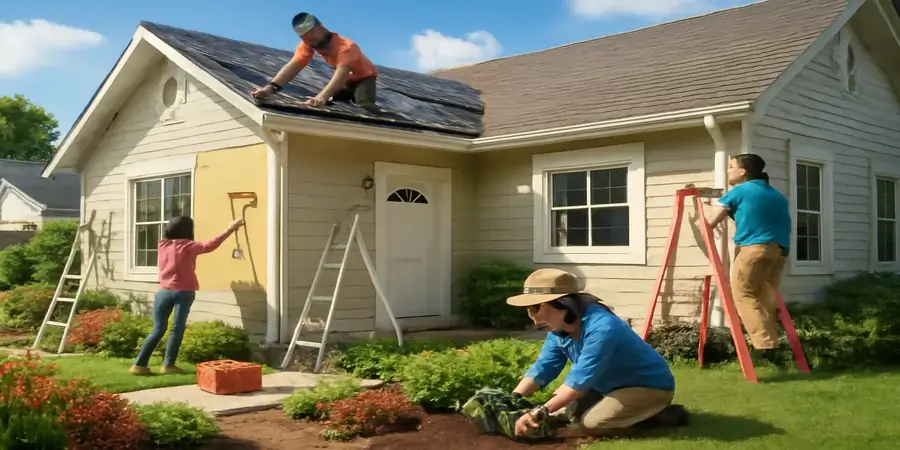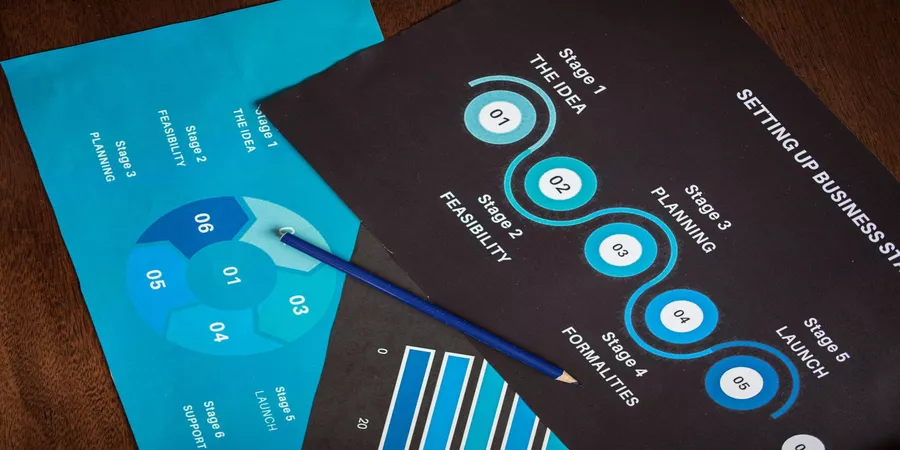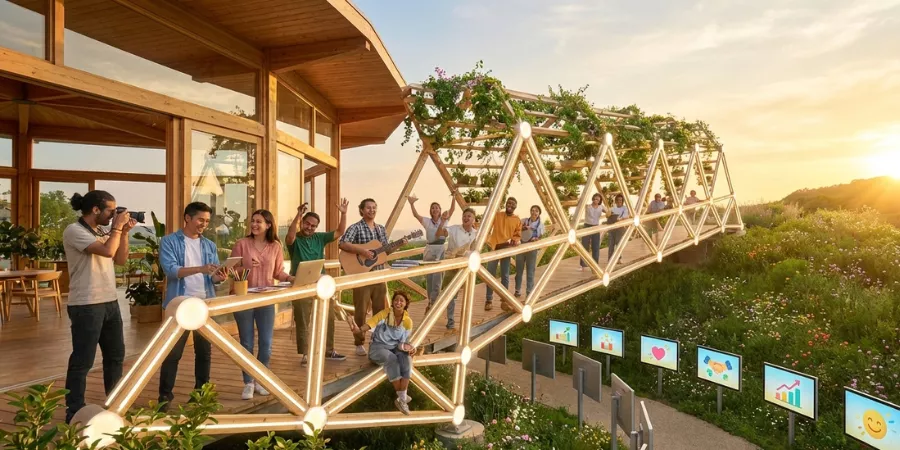The global DIY home improvement market stands as one of the most resilient and expansive consumer sectors, with the DIY retailing market projected to surge from $791.3 billion in 2023 to $959.1 billion by 2030, representing a steady compound annual growth rate of 2.8%. Within this massive ecosystem, the dedicated DIY segment alone commands $290 billion in 2024 and is accelerating at 4.5% CAGR, driven by demographic shifts, economic factors, and technological innovations that are fundamentally reshaping how consumers approach home improvement projects and content consumption.
Executive Summary: The convergence of rising homeownership among millennials and Gen-Z consumers, escalating professional labor costs, and unprecedented accessibility of DIY tutorials has created a $400 billion U.S. market opportunity. This transformation presents significant revenue potential for content creators, home improvement retailers, and marketing professionals through strategic content marketing, e-commerce integration, and targeted audience engagement across multiple digital platforms.
Market Drivers Reshaping the DIY Landscape
The DIY home improvement market’s expansion reflects fundamental shifts in consumer behavior, economic conditions, and technological accessibility. Rising homeownership rates among younger demographics serve as a primary growth catalyst, with millennials now representing 43% of home buyers and Gen-Z consumers entering the housing market with strong DIY preferences developed through social media exposure and economic necessity.
Professional labor shortages and cost increases have accelerated DIY adoption significantly. Contractor labor costs have risen 35% since 2020, with typical project wait times extending 4-8 weeks for basic renovations. This economic pressure point has driven consumers toward DIY solutions, particularly for projects valued under $5,000 where professional labor often represents 60-70% of total costs.
The democratization of DIY knowledge through digital platforms has eliminated traditional barriers to home improvement projects. YouTube tutorials, Pinterest inspiration boards, and Instagram project showcases have transformed complex renovations into accessible, step-by-step processes. Platform data indicates that DIY-related content generates 340% higher engagement rates compared to traditional home improvement marketing, demonstrating strong consumer appetite for educational and inspirational content.
Regional market dynamics reveal significant growth opportunities, particularly in Asia-Pacific markets where DIY retailing is projected to expand from $92.2 billion in 2024 to $147.0 billion by 2032 at 6.0% CAGR. This acceleration reflects urbanization trends, rising disposable incomes, and increasing homeownership rates in emerging economies.
Content Marketing Opportunities and Strategic Frameworks
The DIY home improvement sector presents unprecedented content marketing opportunities across multiple formats and platforms. Project tutorial content represents the highest-value category, with comprehensive guides generating average engagement rates 450% higher than promotional content. Successful DIY content creators typically focus on mid-complexity projects that balance accessibility with meaningful transformation potential.
Tool review and comparison content addresses significant consumer pain points while offering substantial monetization opportunities through affiliate partnerships. Home improvement tool purchases average $1,200-$3,500 annually per household, with consumers spending considerable research time before major acquisitions. Review content that provides genuine testing insights, performance comparisons, and value assessments commands premium affiliate commission rates ranging from 3-8%.
Cost calculator and project planning content serves dual purposes of audience value delivery and lead generation for retailers and contractors. Interactive calculators that estimate material costs, timeline requirements, and skill level assessments generate high dwell times and frequent return visits, creating optimal conditions for relationship building and conversion optimization.
Seasonal content planning maximizes audience engagement and revenue potential by aligning with natural DIY project cycles. Spring renovation content performs optimally from February-May, outdoor projects peak June-August, weatherization and interior updates dominate September-November, and holiday decorating content generates highest engagement December-January. Strategic content calendars that anticipate these patterns achieve 35-50% higher organic reach compared to non-seasonal approaches.
E-commerce Integration and Digital Commerce Evolution
The intersection of DIY content and e-commerce represents a rapidly expanding revenue opportunity, with content-driven sales accounting for 28% of total home improvement purchases in 2024. Successful integration strategies combine educational content with seamless purchasing pathways, reducing friction between inspiration and transaction completion.
Affiliate marketing within the DIY space has evolved beyond simple product recommendations to comprehensive ecosystem partnerships. Leading content creators establish relationships with multiple retailers, tool manufacturers, and material suppliers to provide audience choice while maximizing commission potential. Top-performing DIY influencers report affiliate revenues of $50,000-$500,000 annually through strategic partnership management and authentic product integration.
Social commerce functionality has transformed DIY content monetization, with platforms like Instagram Shopping, Pinterest Product Pins, and YouTube Shopping enabling direct purchases from content experiences. These integrated purchasing options reduce conversion funnel complexity while providing detailed attribution data for optimization and scaling successful content formats.
Drop-shipping and private label opportunities within DIY accessories and organizational solutions offer content creators paths toward higher-margin revenue streams. Custom tool organizers, project planning templates, and specialty hardware collections allow creators to leverage audience trust while building sustainable business models beyond platform-dependent advertising revenue.
Technology Integration and Smart Home Convergence
Augmented reality applications are revolutionizing DIY project planning and execution, with AR-enabled apps allowing consumers to visualize renovations before beginning work. Popular applications like IKEA Place, Sherwin-Williams ColorSnap Visualizer, and Lowe’s Measure Your Space have collectively generated over 100 million downloads, indicating strong consumer adoption of technology-enhanced DIY planning tools.
Smart home integration represents a growing content category as DIY enthusiasts seek to incorporate connected devices into renovation projects. Smart lighting, automated window treatments, and integrated security systems offer content creators opportunities to address technology adoption while partnering with IoT device manufacturers for sponsored content and affiliate opportunities.
Virtual reality training modules are emerging as premium content offerings, allowing DIY enthusiasts to practice complex techniques in risk-free environments before attempting actual projects. VR training content commands premium pricing while delivering genuine value through skill development and confidence building.
3D printing technology integration opens new content categories focused on custom hardware solutions, decorative elements, and replacement parts. DIY creators who incorporate 3D printing into project tutorials address unique audience needs while establishing expertise in emerging technology applications.
Audience Segmentation and Targeted Engagement Strategies
DIY home improvement audiences demonstrate distinct segmentation patterns that inform content strategy and monetization approaches. “Weekend Warriors” represent 35% of the market, preferring projects completable within 8-12 hours with clear instructions and minimal specialized tools. This segment responds well to efficiency-focused content, tool rental recommendations, and quick transformation showcases.
“Renovation Enthusiasts” comprise 28% of DIY consumers and pursue larger projects requiring multiple weekends and substantial skill development. This audience values comprehensive tutorials, technique deep-dives, and advanced tool reviews. Content creators serving this segment often develop premium subscription offerings, detailed course materials, and exclusive community access.
“First-Time Homeowners” represent the fastest-growing segment at 25% of the market, seeking foundational knowledge, basic maintenance tutorials, and confidence-building content. This demographic responds to beginner-friendly approaches, safety emphasis, and progressive skill-building content series.
“Sustainability-Focused DIYers” account for 12% but demonstrate highest engagement rates and premium content willingness to pay. This segment prioritizes eco-friendly materials, energy efficiency improvements, and upcycling projects, creating opportunities for partnerships with sustainable product manufacturers and environmental organizations.
Monetization Models and Revenue Optimization
Successful DIY content creators employ diversified monetization strategies that balance audience value with sustainable revenue generation. Sponsored content partnerships with tool manufacturers and material suppliers typically generate $1,000-$10,000 per campaign depending on audience size and engagement rates. Authentic integration that maintains educational value while showcasing products achieves optimal performance for both creators and brand partners.
Subscription-based premium content offerings provide predictable revenue streams while delivering enhanced value to dedicated audience segments. Premium tiers typically include detailed project plans, video tutorials, direct creator access, and exclusive content. Successful creators report subscription conversion rates of 2-5% from total audience with average monthly pricing of $15-$49.
Digital product sales, including project templates, cutting lists, and planning worksheets, offer high-margin revenue opportunities with minimal ongoing fulfillment requirements. Top-performing digital products solve specific pain points like measurement calculations, material estimation, and project scheduling, commanding prices from $19-$197.
Live workshop and consultation services enable creators to leverage expertise for premium pricing while building deeper audience relationships. Virtual workshops priced at $49-$197 per session and one-on-one consultations at $100-$300 per hour provide scalable service revenue streams.
Future Market Implications and Strategic Recommendations
The DIY home improvement market’s evolution toward sustainability and smart technology integration presents significant opportunities for forward-thinking content creators and retailers. Environmental consciousness among DIY consumers is driving demand for content focused on energy efficiency, sustainable materials, and waste reduction strategies.
Artificial intelligence integration in project planning and execution guidance represents an emerging content category. AI-powered apps that provide personalized project recommendations, skill assessments, and troubleshooting support create opportunities for creators to develop proprietary technology solutions while building audience dependence.
Augmented reality shopping experiences will become increasingly important for DIY retailers, requiring content creators to develop AR-compatible tutorials and product demonstrations. Early adopters who master AR content creation will establish competitive advantages in audience engagement and conversion optimization.
The aging housing stock in developed markets creates expanding opportunities for maintenance and repair content, complementing traditional renovation and improvement focus areas. Content addressing aging infrastructure, updated building codes, and modernization requirements serves growing market segments while building expertise authority.
Actionable Insights for Industry Stakeholders
Content creators should prioritize building email lists and owned audience channels to reduce platform dependency while developing multiple revenue streams. The most successful DIY creators balance educational content with strategic monetization, maintaining audience trust through authentic recommendations and transparent partnerships.
Home improvement retailers must invest in content marketing capabilities to compete effectively in the evolving landscape. Retailers who develop comprehensive content strategies, including tutorial libraries, project inspiration galleries, and educational resources, achieve 25-40% higher customer lifetime values compared to transaction-focused approaches.
Marketing professionals should recognize DIY content’s extended sales cycles and optimize attribution models accordingly. DIY purchases often involve 6-8 touchpoints over 2-6 months, requiring sophisticated tracking and nurturing strategies that account for research-intensive buying behaviors.
Brand manufacturers should develop creator partnership programs that emphasize authentic product integration rather than traditional advertising approaches. Successful brand partnerships focus on genuine product utility within project contexts, building long-term creator relationships that generate sustained audience trust and conversion performance.
Frequently Asked Questions
Q: What drives the growth in DIY home improvement market participation? A: Growth is driven by millennial and Gen-Z homeownership increases, rising professional labor costs (up 35% since 2020), and improved access to DIY education through digital platforms and tutorial content.
Q: Which content formats generate highest engagement in DIY marketing? A: Video tutorials achieve 450% higher engagement than promotional content, followed by before-and-after transformations, tool reviews, and step-by-step project guides with detailed material lists and cost breakdowns.
Q: How do seasonal patterns affect DIY content strategy? A: Spring renovation content (Feb-May), summer outdoor projects (Jun-Aug), fall weatherization (Sep-Nov), and winter holiday decorating (Dec-Jan) create distinct engagement cycles requiring strategic content calendar planning.
Q: What role does technology play in modern DIY experiences? A: AR planning apps, smart home integration tutorials, 3D printing applications, and VR training modules are transforming DIY project planning, execution, and skill development while creating new content opportunities.
Q: How should creators balance educational content with monetization? A: Successful creators maintain 70-80% educational content with 20-30% monetized content, ensuring authentic product integration that serves genuine audience needs while building trust for sustainable revenue generation.
Q: What audience segments offer highest monetization potential? A: “Renovation Enthusiasts” and “Sustainability-Focused DIYers” demonstrate highest willingness to pay for premium content, with conversion rates 2-3x higher than casual weekend DIY participants.
Q: How important is multi-platform content distribution for DIY creators? A: Multi-platform presence is essential, with successful creators typically active on 3-4 platforms (YouTube for tutorials, Instagram for inspiration, Pinterest for planning, TikTok for quick tips) to maximize audience reach and engagement.
The DIY home improvement market’s $959 billion trajectory represents more than economic opportunity—it signifies a fundamental shift toward consumer empowerment through accessible knowledge and technology integration. Success in this dynamic landscape requires authentic audience relationships, strategic content planning, and innovative monetization approaches that balance educational value with sustainable revenue generation.
How will your organization capitalize on the growing intersection of DIY content and commerce? What strategies will you implement to build authority and audience trust in the expanding home improvement market?







